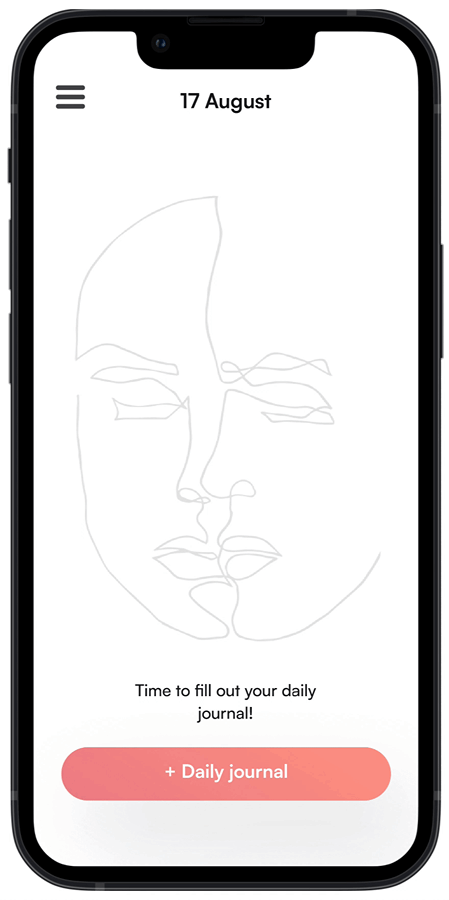A skincare tracking app with the power of big data.
Summary
Quantified self is big business, but it hasn’t broken into the market of skincare and beauty.
In this startup side project, myself and 2 friends wanted to run a few sprints and explore a startup idea.
The problem: It’s hard to know what is causing or exacerbating chronic acne, and without knowing the cause it’s hard to know what to do to solve it - or to know if what you’re doing is helping.
As the product designer in the team, I researched and designed the MVP of an app to allow users with acne to:
track their skin daily
track their products and skincare related activities daily
see the correlations between their actions and their acne
later on, the concept is that with a large enough user base, we would have a valuable dataset which could be used to show users what actions or ingredients actually helped other people like them with their acne - or even with other chronic illnesses.


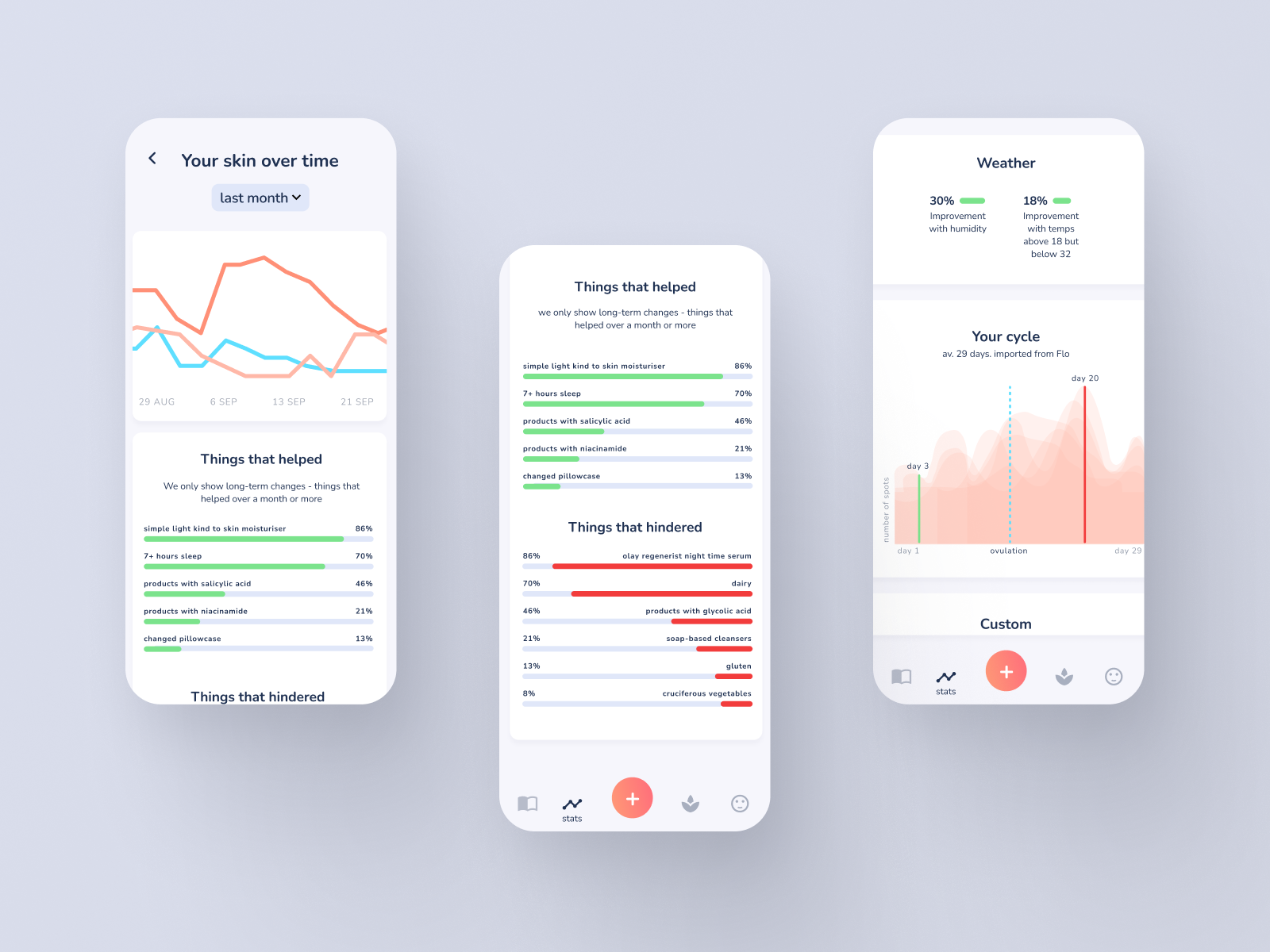
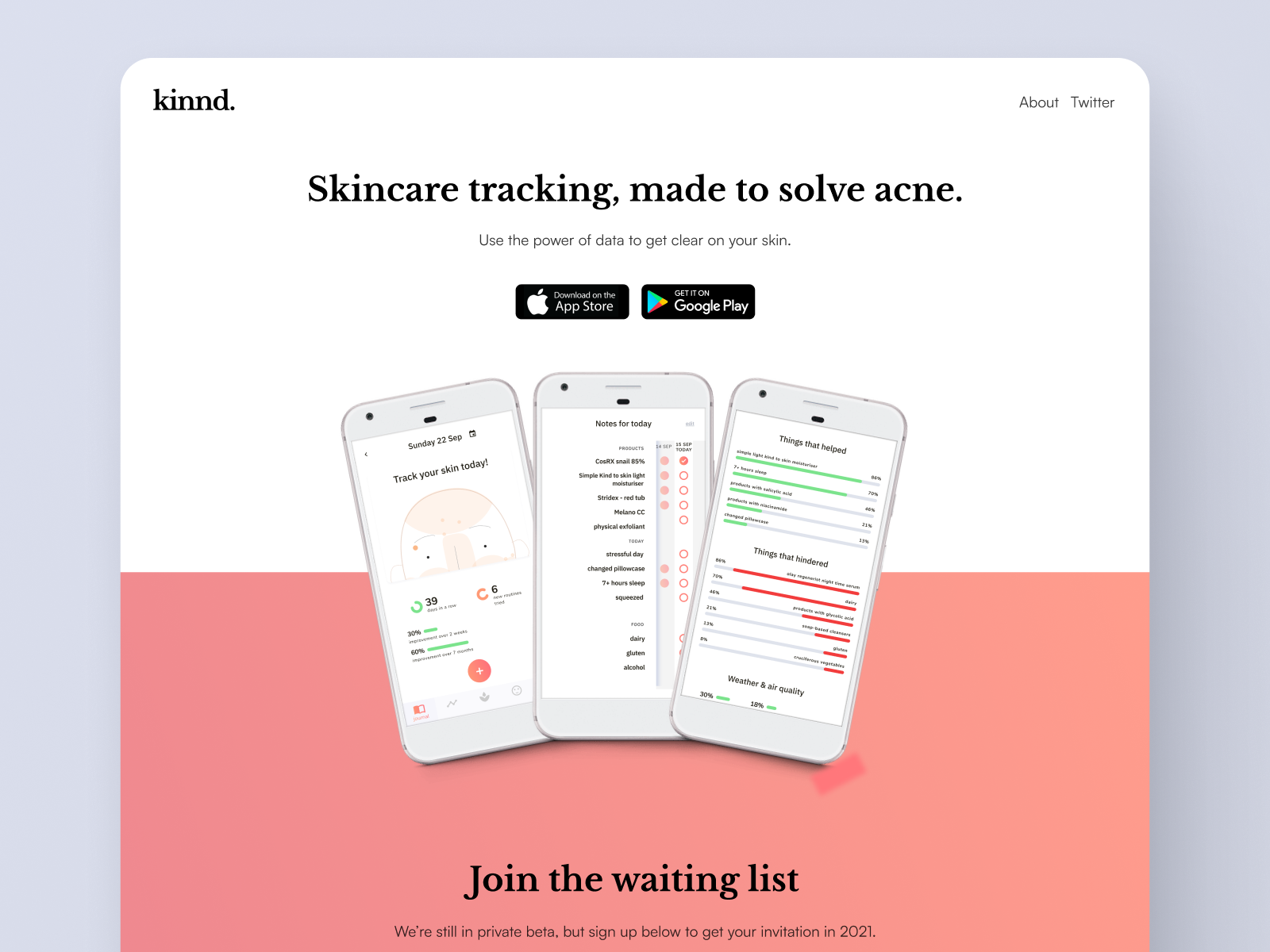
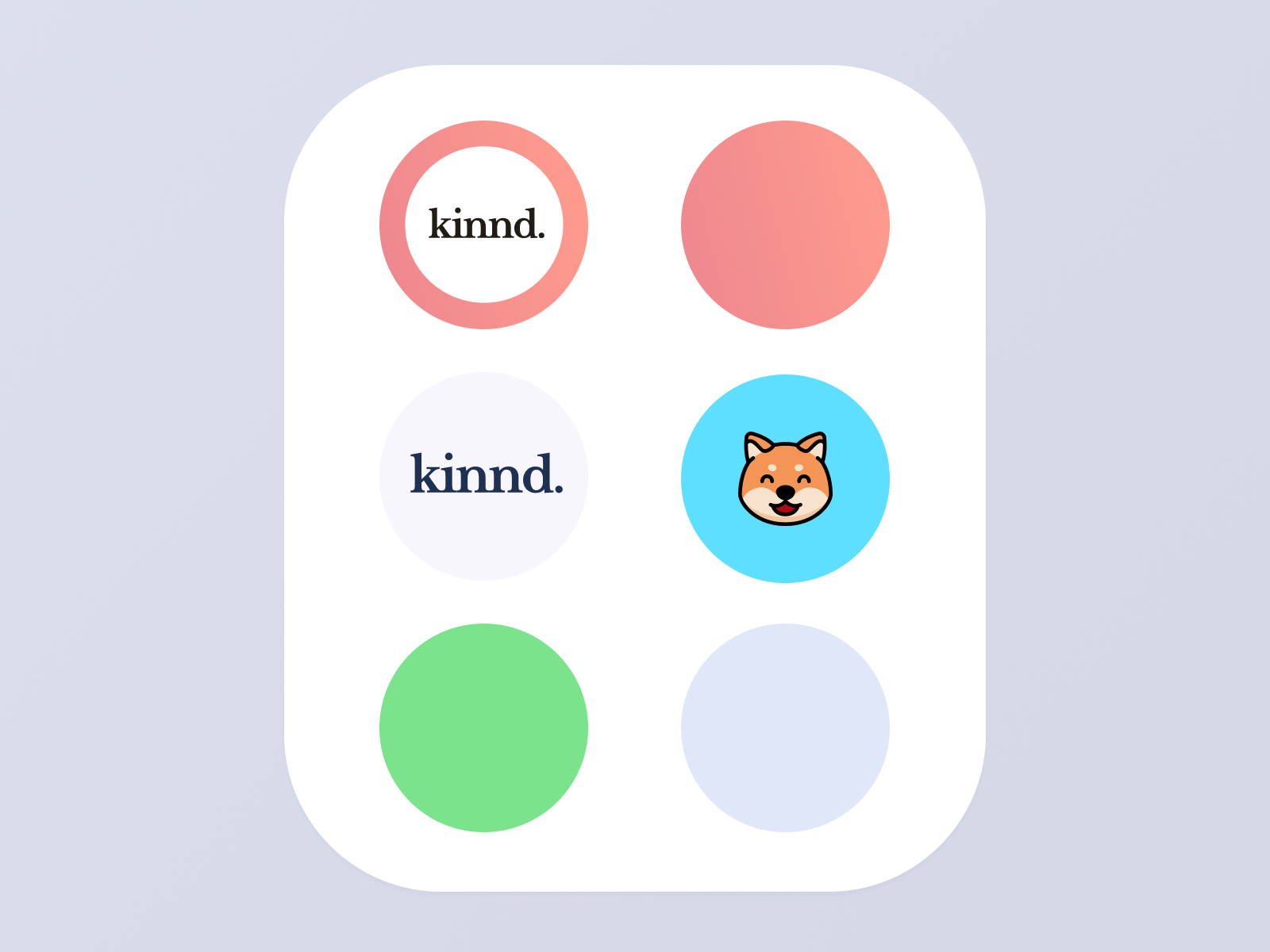
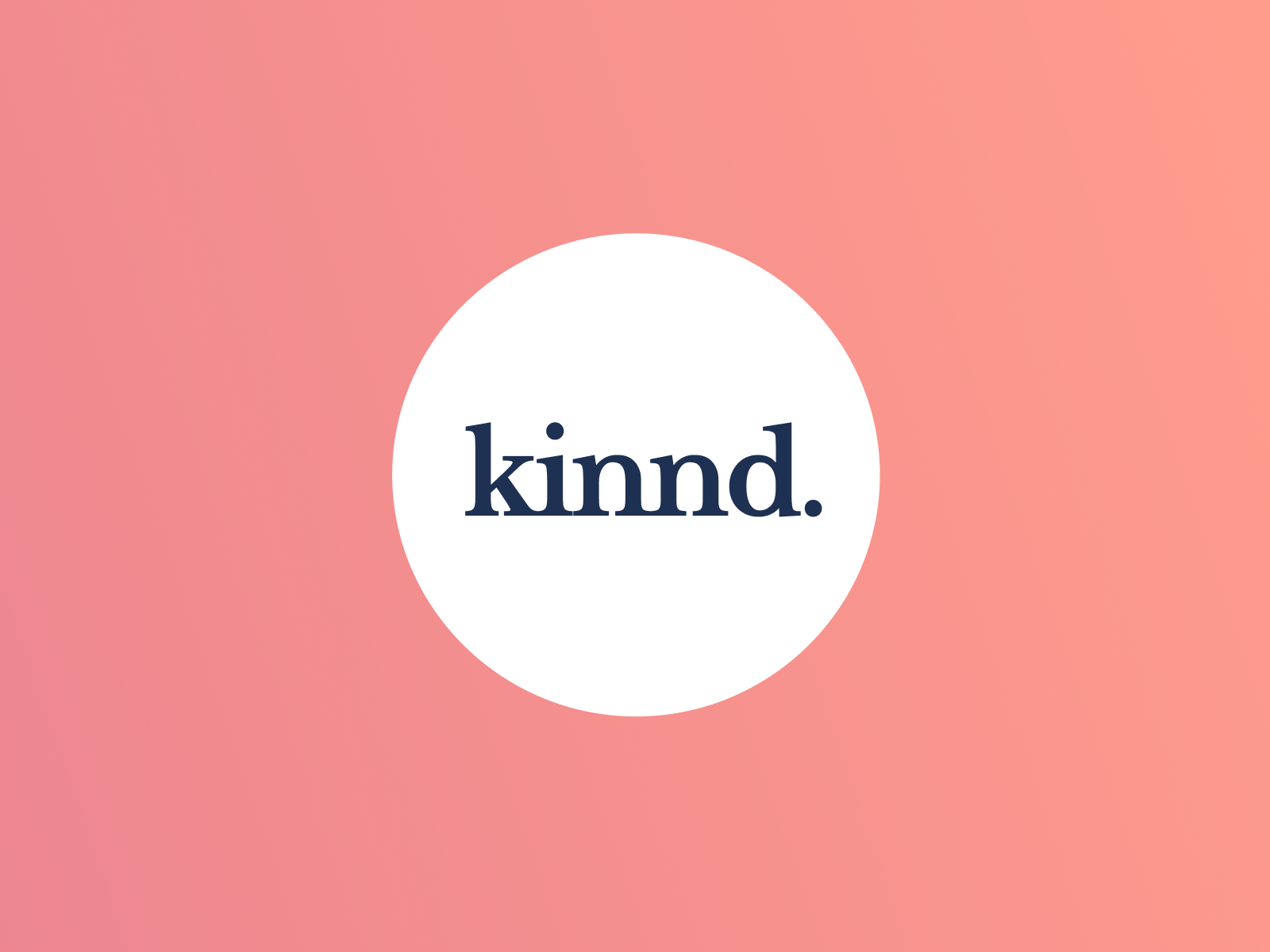
The problem
Chronic acne can be an incredibly frustrating experience. People who have experienced it know that there’s what feels like limitless potential solutions on offer - and often none of them seem to work.
A few facts:
Skincare and beauty is a $532 billion dollar industry globally.
95% of people will experience acne at some time in their lives.
For individuals with chronic acne, it can be difficult to actually know what causes acne and what helps it. There are so many variables affecting skin, and results appear slowly. Your skin is on a 2-3 week cycle, so something that happened 2 weeks ago could only show up on your face today.
There’s a huge market encouraging people to try new treatments and solutions to acne, but there’s a gap in the market for a smart way to track actions and see results with a data-driven approach.
We have MyFitnessPal to track our diets, Fitbit to track our steps, Flo to track our cycle, Sleep Cycle to track our sleep… where is the skin tracker?
User research
I ran some lean user research on this product, organising remote user interviews with people from around the world.
I created a screener on Google Forms and got it in front of people with an ad on Reddit, targeting users of the subreddit r/skincareaddiction. That’s where I hypothesised my ideal early users would hang out.
I also wanted to speak to people who had some experience with quantified self tracking -something like Fitbit, food tracking, the Oura Ring, etc. Those people already kind of get it in terms of what I’m trying to do with this product - we can skip past the conversation about tracking stuff as a whole, and jump straight into the conversation about tracking your skin.
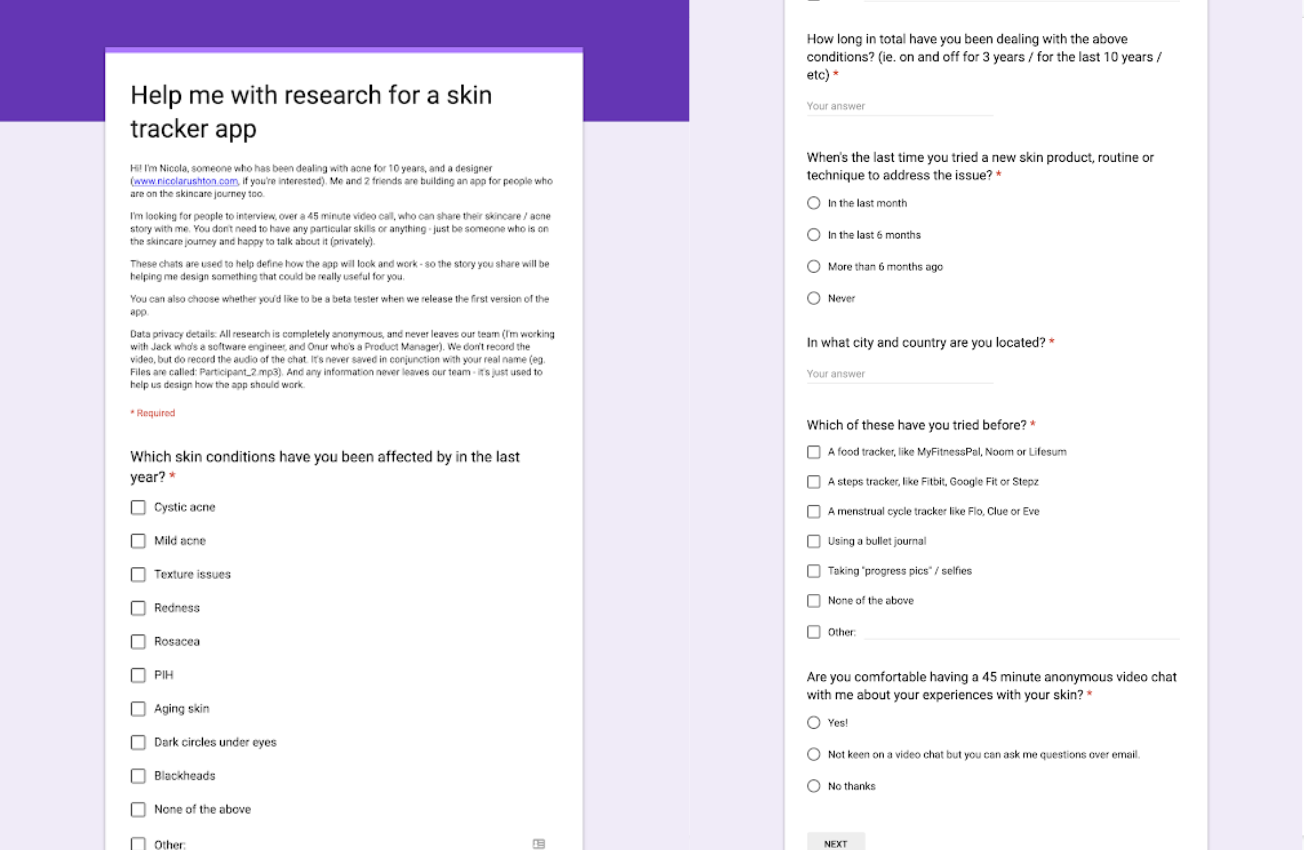
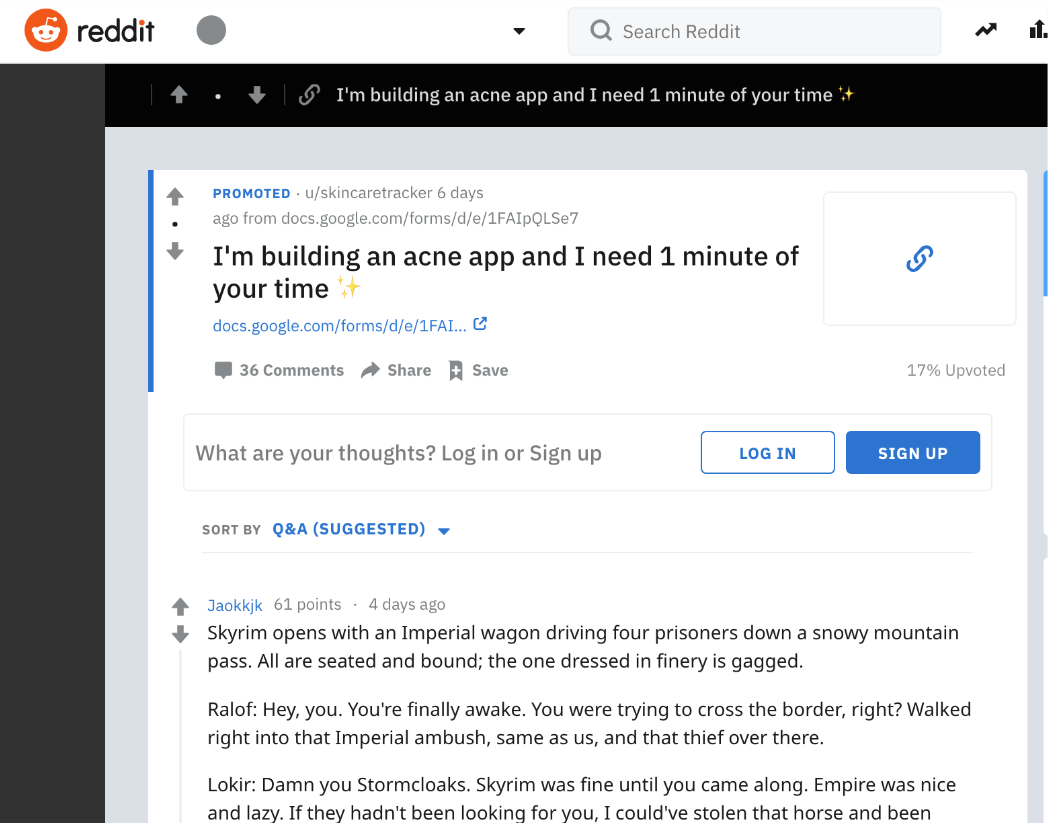
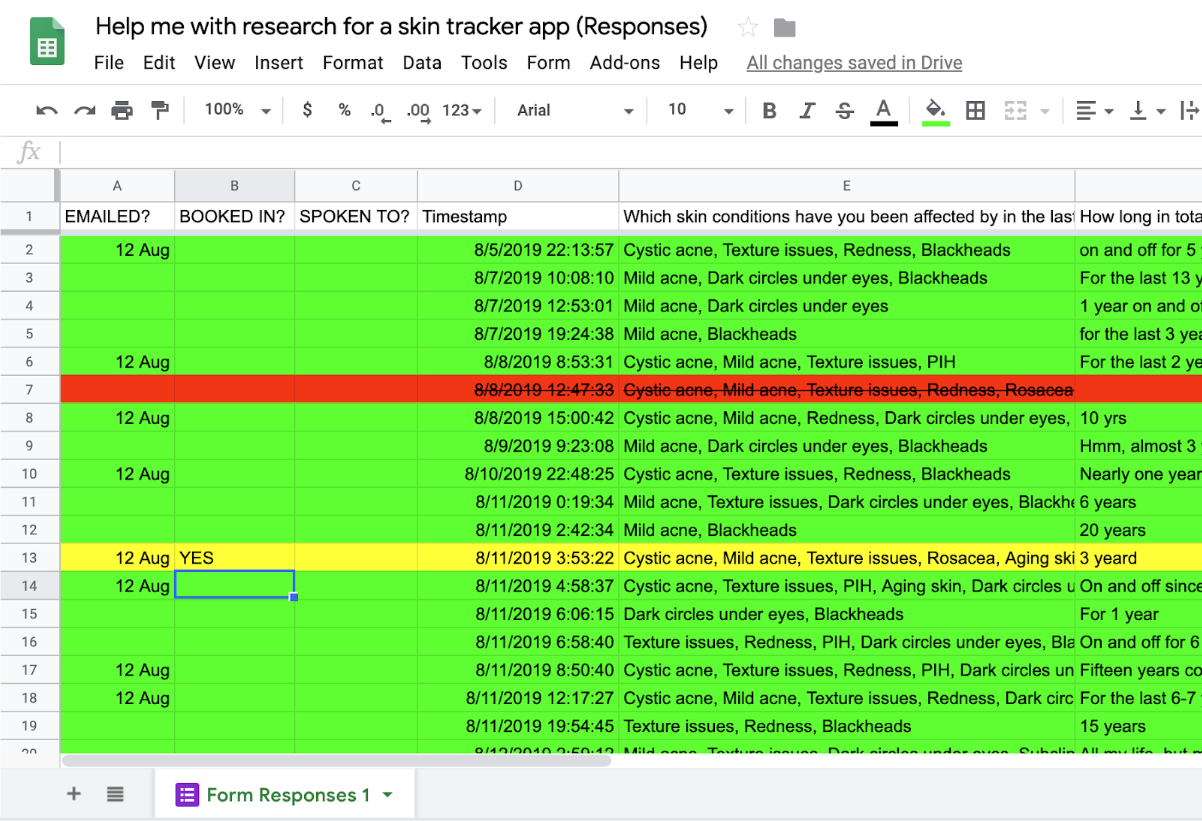
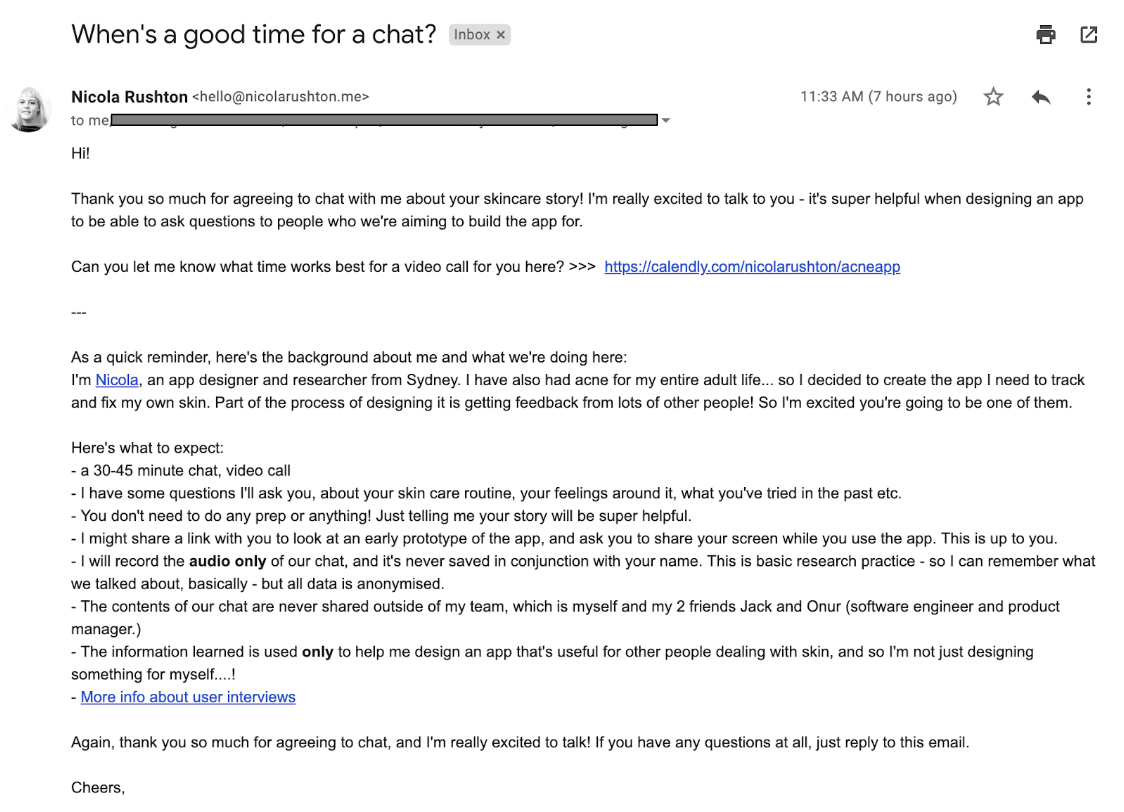
Early validation: ±250 emails collected from one Reddit advert.
Qualitative research: 6 user interviews conducted.
Competitor research: There are people online directly asking for a skincare tracking app (1, 2, 3, 4, 5, 6, 7) and/or ‘hacking’ existing solutions (1, 2, 3).
Persona
From this research, the target persona for early adopters looks like:
DEFINING FEATURESCurrently experiencing acne or another skin condition
Currently actively working on improving it (ie. has made purchases or tried new products within the last month)
Anywhere in the world
Any gender
CURRENT BEHAVIOURS Likely to have some experience with ‘tracking’ - ie. Fitbit, Oura Ring, Flo, Clue, etc
Highly engaged in solving the skincare problem. Could mean they’re reading Reddit, buying new products, watching youtube, asking friends, etc.
PAINS & NEEDSHave tried many things to solve the skin issue.
Frustrated
Don’t know what exactly is causing the issue with their skin
Brand
I designed “minimum viable branding” - enough to ship a landing page and build out the MVP looking like a real product, but without spending too much time focusing on the visuals - which ultimately are less important than getting it into user’s hands and validating the core product idea.
The brand is a play on skin, kindness and kinship.
Solution
The core of the product involves users tracking two things:
the products, ingredients and other skincare activities they’re doing daily
how their skin is looking that day.
Based on these details, as well as other integrations including menstrual trackers, weather and humidity data, the app can surface data showing relationships between external factors and the skin.
I designed a “RAT” - Riskiest Assumption Test - a super-fast-to-build app design and worked with the developer to get it built.
A simple daily tracking process. Users can track two kinds of spots, which we don’t name - allowing a little flexibility to fit a slightly broader range of people.
Iteration and design
Acne… how abstract is abstract enough?
With a product like this, it would be easy to get a bit too on-the-nose. We tried a skin tracking version with more realism, but felt that a more artistic abstraction of acne created a happier user experience.
The daily journal - easy to build = easy to ship
On this screen, intended to be filled out daily, the user can track their products and activities. Ultimately, often the simplest thing to build is the best option to get into user’s hands asap.
Using data to understand the self
An MVP version of this app would be able to show a user the insights gathered from their own data - what are the relationships between their skin and the different products and activities they’re tracking?
But the real power in it would come further down the line. With enough users, we could use big data to present aggregate insights based on other users similar to you.
Imagine:
If we had a database with the ingredients list of all products users used, we could show correlations not between your skin and one product, but more usefully show a correlation between your skin and an ingredient.
If we had the data showing many users’ skin over time, and what products or activities they did that actually resulted in an improvement. We could surface that data to similar users and help them with tailored, targeted suggestions.
Monetisation
The proposed monetisation strategy would be freemium subscription, similar to many other apps in the same space - allow users full access to tracking (and to creating useful data for us!) and to seeing top correlations, but require a subscription to see more in-depth data and content.
Conclusion
Based on user feedback, we felt excited about the problem space and the solution to the problem.
However, the concept of raising funds and turning this into a real business was more than we were willing to take on. Ultimately I love working on design and product for startups, but I’m probably not cut out to be a startup founder myself.
Since 2019, when we worked on this, several competitors have shipped solving this problem in a very similar way, including Troveskin and SkinTheory, which together have over 100k downloads.

